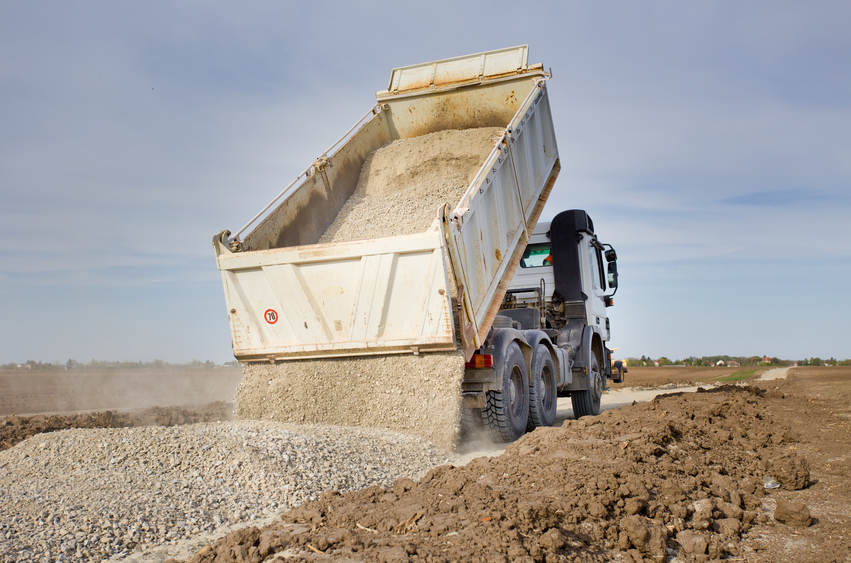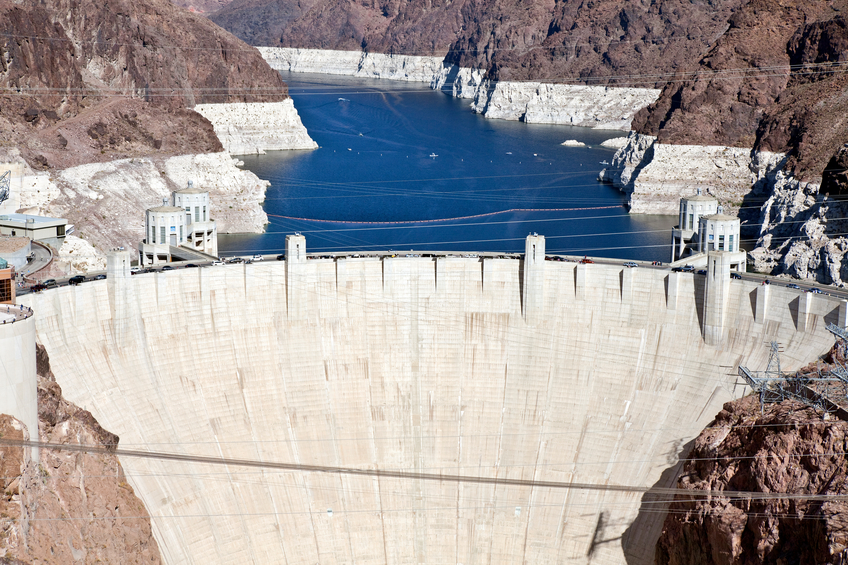Yukon Geotechnical 30 PDH Discount Package
Courses in this Package
Basic Geotechnical Engineering (G07-003)
Scour in Cohesive Soils (G07-006)
Emergency Action Planning for Dam Safety (C04-054)
Retaining Walls for Non-Geotechnical Engineers (G02-013)
Selecting and Accommodating Inflow Design Floods for Dams (C04-055)
Slope Stability (G04-001)
Soil Properties and Other Strange Things for Non-Geotechnical Engineers (G02-014)

In this online engineering PDH course you will learn the background for bearing capacity and settlement analysis; lateral earth pressure on retaining walls, piles and drilled shafts; as well as common soil properties.
Geotechnical engineering is an art form that requires both judgment and experience to arrive at a satisfactory solution. Unlike steel or concrete for instance, soil is quite different. The ground below us ultimately supports all structures and to be successful, the ground must not fail under the applied structural load.
The geotechnical engineer's task is to explore the subsurface conditions at a project site, determine the capacity of the soil to carry the load without collapsing or experiencing intolerable movement and to recommend appropriate foundation alternatives. Geotechnical engineers can arrive at different but equally satisfactory design values even when given the same set of information. Acceptable solutions are dependent upon many soil variables, methods used to predict the results and the practitioner's experience.
This 7 PDH online course is intended for a wide range audience; particularly the non-geotechnical engineers who are interested in gaining a better understanding of the geotechnical engineering field.
This P.Eng. continuing education course is intended to provide you with the following specific knowledge and skills:
- Understanding the common properties of soil and explorations
- Learning the methods of calculating settlement
- Learning the methods to calculate and assign the allowable soil bearing capacity
- Understanding the various types of earth pressure and how each is calculated
- Learning about the total force resulting from lateral pressure and factors of safety
- Learning about piles and drilled shafts
- Learning about soil compaction
In this professional engineering CEU course, you need to review the course document titled, "Basic Geotechnical Engineering".
Upon successful completion of the quiz, print your Certificate of Completion instantly. (Note: if you are paying by check or money order, you will be able to print it after we receive your payment.) For your convenience, we will also email it to you. Please note that you can log in to your account at any time to access and print your Certificate of Completion.

This online engineering PDH course provides information on scour in cohesive soils and presents a study through which an erosion testing device that simulates open channel flow on a small scale was developed and tested. In addition, a recommended design approach is provided that can be used for estimating scour for a range of cohesive soils.
Scour in cohesive soils has been a challenge for engineers and designers. Unlike noncohesive soils, practical measurement techniques and well accepted guidance on the scourability of cohesive soils are severely lacking.
This course focuses on two main objectives. The first is to demonstrate a new ex situ erosion testing device (ESTD) that can mimic the near-bed flow of open channels to erode cohesive soils within a specified range of shear stresses. The second objective is to develop a method for estimating the critical shear stress and erosion rates for a limited range of cohesive soils in the context of the Hydraulic Engineering Circular 18 scour framework.
This 7 PDH online course is applicable to geotechnical and civil engineers who are interested in expanding their knowledge on the topic of scour and erosion processes in cohesive soils.
This P.Eng. continuing education course is intended to provide you with the following specific knowledge and skills:
- Familiarizing with cohesive soils and the different factors influencing their behavior
- Understanding the erosion processes in cohesive soils
- Understanding the design, operation, advantages and limitations of the ESTD
- Knowing how the log-law velocity profile is reproduced in the test channel and how boundary shear stress is measured
- Learning about the preparation of soil specimens and soil sample properties
- Learning about the factors affecting erosion and the analytical development of the recommended design relations
- Gaining an overview of future research recommendations in the field
Upon successful completion of the quiz, print your Certificate of Completion instantly. (Note: if you are paying by check or money order, you will be able to print it after we receive your payment.) For your convenience, we will also email it to you. Please note that you can log in to your account at any time to access and print your Certificate of Completion.

This engineering online PDH covers the basic guidelines and definitions regarding Emergency Action Plans (EAP) for dams.
To improve the Nation’s emergency preparedness and response capabilities, FEMA believes that formal guidelines are needed to help dam owners, in coordination with emergency management authorities, effectively develop and exercise Emergency Action Plans (EAPs) for dams. The purpose of the guidance in this course is to meet that need.
The EAP guidelines in this course are focused on developing or revising EAPs for dams that would likely cause loss of life or significant property damage as a result of a failure or other life-threatening incident. The areas downstream of each dam are unique. Therefore, the extent and degree of potential impacts of each dam vary.
This 4 PDH online course is applicable to geotechnical and civil engineers, as well as other technical personnel who are interested in gaining a better understanding in preparing and/or handling emergency action plans for dam safety.
This P.Eng. continuing education course is intended to provide you with the following specific knowledge and skills:
- Understanding the purpose, scope, coordination requirements, evacuation responsibilities, and maintenance of the EAP
- Familiarizing with the outline and contents of an EAP
- Understanding EAP responsibilities, notification flowcharts, response processes, and preparedness
- Learning about inundation maps
- Familiarizing with the notification flowchart, high flow notification table, and inundation map thru various examples
Upon successful completion of the quiz, print your Certificate of Completion instantly. (Note: if you are paying by check or money order, you will be able to print it after we receive your payment.) For your convenience, we will also email it to you. Please note that you can log in to your account at any time to access and print your Certificate of Completion.

This online engineering PDH course discusses the method of calculating the active earth pressure using the Rankine and Coulomb methods. The course also outlines the method used to calculate the factors of safety for sliding, overturning and bearing capacity, which are three elements required for retaining wall design. A basic example of the calculations for the Rankine method is provided.
Retaining walls are structures that support backfill and allow for a change of grade. For instance a retaining wall can be used to retain fill along a slope or it can be used to support a cut into a slope. Retaining wall structures can be gravity type structures, semi-gravity type structures, cantilever type structures, and counterfort type structures. Walls might be constructed from materials such as fieldstone, reinforced concrete, gabions, reinforced earth, steel and timber. Each of these walls must be designed to resist the external forces applied to the wall from earth pressure, surcharge load, water, earthquake etc.
This 2 PDH online course is intended for a wide range audience and in particular, the non-geotechnical engineer and is not intended as an exhaustive review of the subject. The objective of this course is to familiarize primarily the non-geotechnical engineer with methods for calculating the active earth pressure force against a retaining wall and for assessing its stability with respect to sliding, overturning and bearing capacity.
This P.Eng. continuing education course is intended to provide you with the following specific knowledge and skills:
- Calculating the lateral earth pressure force.
- Calculating factors of safety for overturning, sliding and bearing capacity.
Upon successful completion of the quiz, print your Certificate of Completion instantly. (Note: if you are paying by check or money order, you will be able to print it after we receive your payment.) For your convenience, we will also email it to you. Please note that you can log in to your account at any time to access and print your Certificate of Completion.

This online engineering PDH provides basic guidelines for selecting and accommodating inflow design floods for dams based on current and accepted practices.
Appropriate selection of the Inflow Design Flood is the first step in evaluating and designing a dam to address hydrologic potential failure modes and reduce risks to the public. Existing guidelines of most state and federal agencies for evaluating the hydrologic safety of dams were written in the late 1970s. Since that time, significant technological and analytical advances have led to better watershed and rainfall information, improvements in the analysis of extreme floods, greater sophistication in means to quantify incremental dam failure consequences, and tools for evaluating hydrologic events in a risk-based context.
This 4 PDH online course is applicable to geotechnical and civil engineers, dam owners or regulators, and other technical personnel interested in gaining a better knowledge on inflow design floods for dams.
This P.Eng. continuing education course is intended to provide you with the following specific knowledge and skills:
- Learning about the dam classification system
- Understanding the guidelines for selecting the inflow design flood
- Learning about spillway characteristics (mainly controlled versus uncontrolled)
- Familiarizing with routing the inflow design flood
- Familiarizing with freeboard requirements
- Defining terminology and acronyms associated with the overall scope of the course
Upon successful completion of the quiz, print your Certificate of Completion instantly. (Note: if you are paying by check or money order, you will be able to print it after we receive your payment.) For your convenience, we will also email it to you. Please note that you can log in to your account at any time to access and print your Certificate of Completion.

This online engineering PDH course provides guidance for analyzing the static stability of slopes of earth and rock-fill dams, slopes of other types of embankments, excavated slopes, and natural slopes in soil and soft rock.
Slope stability criteria are presented for strength tests, analysis conditions, and factors of safety. The criteria are intended to be used with methods of stability analysis that satisfy all conditions of equilibrium. Methods that do not satisfy all conditions of equilibrium may involve significant inaccuracies and should be used only under the restricted conditions described herein.
This 4 PDH online course is applicable to geotechnical and structural engineers, as well as design and construction personnel working on projects involving slope stability analysis.
This P.Eng. continuing education course is intended to provide you with the following specific knowledge and skills:
- Aspects applicable to all load conditions
- Analyses of stability during and at the end of construction
- Analyses of steady-state seepage conditions
- Analyses of sudden drawdown stability
- Analysis of stability during earthquakes
- Design criteria for existing and new embankments
- Design criteria of other slopes
- Presentation of various types of analysis and results
In this professional engineering CEU course, you need to review Chapters 1 through 4 of the US Corps of Engineers Publication EM 1110-2-1902, "Slope Stability".
Upon successful completion of the quiz, print your Certificate of Completion instantly. (Note: if you are paying by check or money order, you will be able to print it after we receive your payment.) For your convenience, we will also email it to you. Please note that you can log in to your account at any time to access and print your Certificate of Completion.

This online engineering PDH course presents the basic properties of soils using simplified and non-exhaustive methods. It provides basic illustrative example calculations, correlations and other interesting information about soil to demonstrate how to arrive at acceptable solutions.
Geotechnical engineering is a fascinating subject. Unlike many engineering disciplines, it is not a pure science but rather it is an art form that requires both judgment and experience to arrive at a satisfactory solution. Unlike steel or concrete for instance, soil is quite different. For instance, geotechnical engineers can arrive at different but equally satisfactory recommendations for bearing capacity or settlement even when given the same information. Acceptable solutions are dependent upon many soil variables and the methods were used to predict the result.
This 2 PDH online course is intended for a wide range audience and in particular, the non-geotechnical engineer to acquaint him/her with some common properties, correlations and other interesting information about soil. The topics discussed herein have been simplified and are not exhaustive but they serve to demonstrate several principles. The interested reader should consult one of many textbooks on the topics discussed herein.
This P.Eng. continuing education course is intended to provide you with the following specific knowledge and skills:
- Understanding how does the bearing capacity solution Work
- Understanding the weight-volume relationship of soil including:
- Void Ratio
- Porosity
- Degree of Saturation
- Water Content
- Total Unit Weight
- Dry Unit Weight
- Specific Gravity
- Percent Compaction
- Learning about soil classification by grain size
- Learning about the Atteberg Limits, shear strength and sensitivity
Upon successful completion of the quiz, print your Certificate of Completion instantly. (Note: if you are paying by check or money order, you will be able to print it after we receive your payment.) For your convenience, we will also email it to you. Please note that you can log in to your account at any time to access and print your Certificate of Completion.